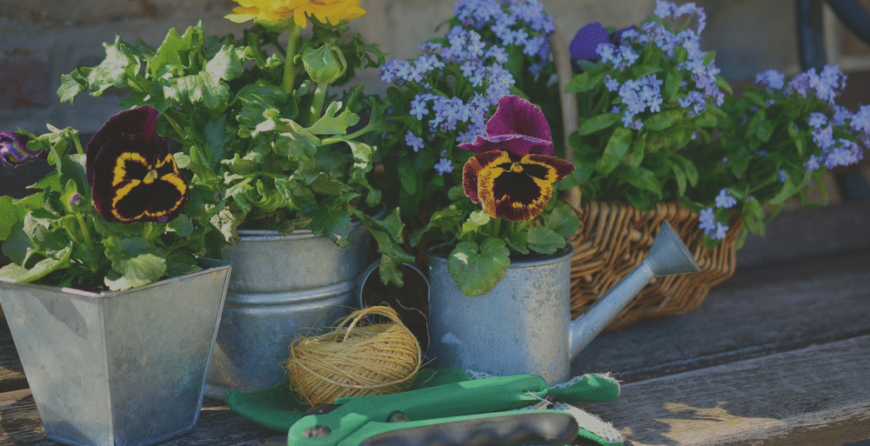 It’s always exciting to think about starting up your own garden that is both fun and can save you a lot of money in grocery shopping. Before taking up organic gardening, you will need to consider a couple of facts in when it comes to particular crops you may be considering. The climate, for example, needs to be factored in that some plants will do very well in spring while others wouldn’t mind a bit of chilliness. Sensitive plants can wait for the warm weather, but there’s nothing stopping you from starting off with the braver plants now as spring approaches.
It’s always exciting to think about starting up your own garden that is both fun and can save you a lot of money in grocery shopping. Before taking up organic gardening, you will need to consider a couple of facts in when it comes to particular crops you may be considering. The climate, for example, needs to be factored in that some plants will do very well in spring while others wouldn’t mind a bit of chilliness. Sensitive plants can wait for the warm weather, but there’s nothing stopping you from starting off with the braver plants now as spring approaches.
In organic gardening, a healthy soil gives birth to a healthy crop, therefore the need to prepare the soil first. While in conventional farming the use of synthetic fertilizer is encouraged, we realize that after some time due to the harsh nature of chemicals these fertilizers can eventually degrade the soil. Organic gardening promotes the use of organic matter instead, which include; animal manure, compost, shredded leaves as well as cover crops. You can also consider some organic alfalfa meal and kelp meal for your soil. After laying out your manure, fork loose the soil, do not turn it over, then rake it flat gently. The organic matter will ensure a constant supply of nitrogen and nutrients necessary for the plants as well as a sufficient source of food for soil microbes.
Let’s have a look at some plants and their advantages in order to determine what you can begin planting.
Peas and Snow Peas
In order to make use of your space sufficiently, don’t use rows. Instead, scatter the peas all over the selected portion of your garden in adequate numbers for a good harvest. Now push them an inch down as you cover them with a little soil. Peas are climbers therefore in need of a structure that would assist in this; use chicken mesh, trellises or sticks in the garden.
Lettuce Is Next
Planting lettuce is almost similar to peas in that you scatter them as well. They need more attention all season long because they can easily turn distastefully bitter and go to seed. It’s better to eat them when they are a tablespoon in size then plant them again, at least after every two weeks.
Kale, Broccoli, Cabbage and Brussels Follow
While planting, space the seeds out two feet apart except for the kale which should be closer. Planting marigold, later on, will help fight off cabbage moth, so you can leave a bit of space for this.
Swiss chard, beets, and turnips are okay with chilly temperatures so they can be planted towards the end of frost. The chill helps turnips in increasing their crisp texture while making their greens sweeter. Plant them in rows and leave a good amount of space in between; beets and Swiss chard are capsules with more than one seed inside that will send out many shoots, thus in need thinning. Early snipping of weaker seedlings after germination will help relieve the plants from overcrowding.
Potatoes should be planted when the soil is still cool at the beginning of spring and harvested before the hot summer temperatures. Potatoes need to be planted in 4-inch-deep furrows. In order to minimize the risk of rotting, it is advisable to cut the potato seeds into pieces with each piece having at least two buds. Let the pieces dry for about two days before planting. Put in only 2 inches of soil initially, then fill up the furrows only after the first sprouts appear.
Onions and leeks can be planted in late winter. Start early by putting the seeds under a bright fluorescent light, indoors. The bulb onion seedlings can then be set out towards the end of the cold season. Plant them three to four inches apart. When the bulbs are mature for harvest, pull them out and place them in a dry but warm room without the sunshine, for storage.
Carrots are delicate plants with varieties that can be grown under slightly different soil and climate conditions. Carrots planted in the fall can be harvested in early winter while preparing spring carrots for planting two weeks before the winter ends. Sow the seeds 2 inches apart, quarter inch deep and in rows that are 10 inches apart. Carrot taste improves as it matures, but never leave carrots in warm soils for long periods. They can be left a bit longer in cooler soils, but to preserve them, dig them out before the ground hardens. Carrots can be stored for months in the refrigerator otherwise, can also be dried, canned or pickled.
Organic gardening can be fun and enjoyable to prepare for. It may not be the warm season yet, but that doesn’t mean that you cannot start off researching and preparing your garden for planting. All in all, a good harvest will be determined by the beginning of your organic gardening; start off with facts and knowledge into what best to plan and at what time. Enjoy your gardening experience!


